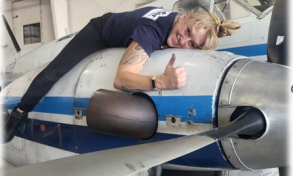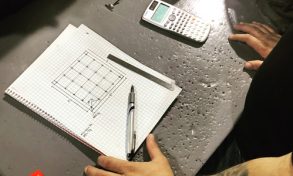Like with any job, there are specific tools you need to get it done. Whether you are just starting out or have been an AMT for a while, here are some of the most commonly used tools.
Speed Handle
One of the most essential tools in any aviation maintenance technician’s toolkit is a speed handle. A speed handle is a long screwdriver with an offset shaft in the middle. It allows AMTs to quickly and effectively remove a screw head. A speed handle can also be used with sockets to tighten or loosen nuts and bolts. They are particularly important when working on high-end aircraft engines that have thousands of screws.
Torque Wrench
When it comes to tightening fasteners and screws on an aircraft, they are often required to be installed to a specified torque (or tightness). Because this is not something someone can just do by hand, there are specially calibrated torque wrenches. You can set the torque wrench to many different torques, making it highly effective for installing a wide variety of screws.
Safety Wire Pliers
Even when the correct torque is used to install nuts and bolts, there is still the chance that they could loosen over time. This is where safety wire comes in. Safety wire gets threaded through a hole that has been drilled into the fastener and when installed correctly, any loosening of the fastener will be counteracted by the tightening of the wire. Safety wire pliers are what AMTs use to twist the aluminum wires into the strong braids that keep these nuts and bolts in place.
Metal Working Tools
Because airplanes are metal, an AMT needs a good set of metal working tools if they are performing any kind of maintenance. These metal working tools will be used for fastening, bending, and cutting metal. The most common metal working tools are rivet guns and drills. Rivets are used to hold fundamental structures of the airplane together- especially in places where the AMT cannot access the back of the material.
Mirrors
Kind of like when you go to the dentist, it sometimes takes a mirror to inspect all the nooks and crannies of an aircraft. When technicians do not have a direct line of sight to the inner workings of a critical part, they will use a mirror. There are also some instances when even a mirror will not help, and the AMT will have to use touch alone to insert and repair parts.
Magnets
One of the aviation industries biggest struggles is with FOD. FOD, or foreign object debris, can be any object that ends up where it’s not supposed to be and could cause damage to equipment or individuals. This can include tools, screws, nuts, and bolts that may be dropped in hard to reach places during regular maintenance. Magnets can reach into those places that are hard to access and collect these potentially hazardous foreign objects.
The Best Tool
When assembling your toolkit, keep in mind that there is no best brand that excels at manufacturing every tool. Instead, each brand usually excels at making one specific tool. Additionally, the most expensive tools aren’t necessarily the best, nor will they make you a better technician. The best tool any AMT has is their brain- the knowledge and experience that they gain in the classroom and on the job. If you’d like to learn more about what it takes to become an AMT, contact NCI today!










